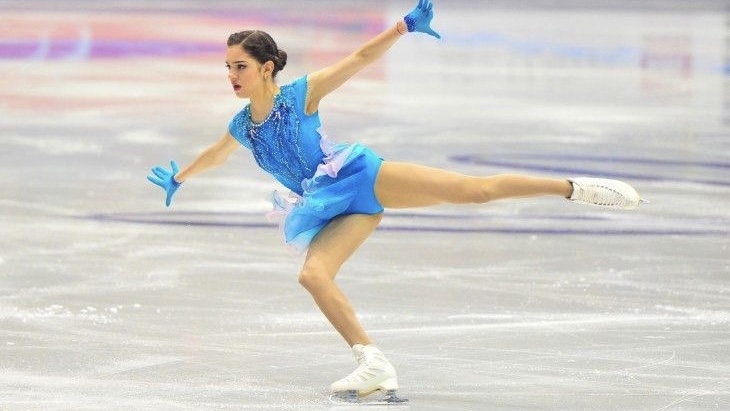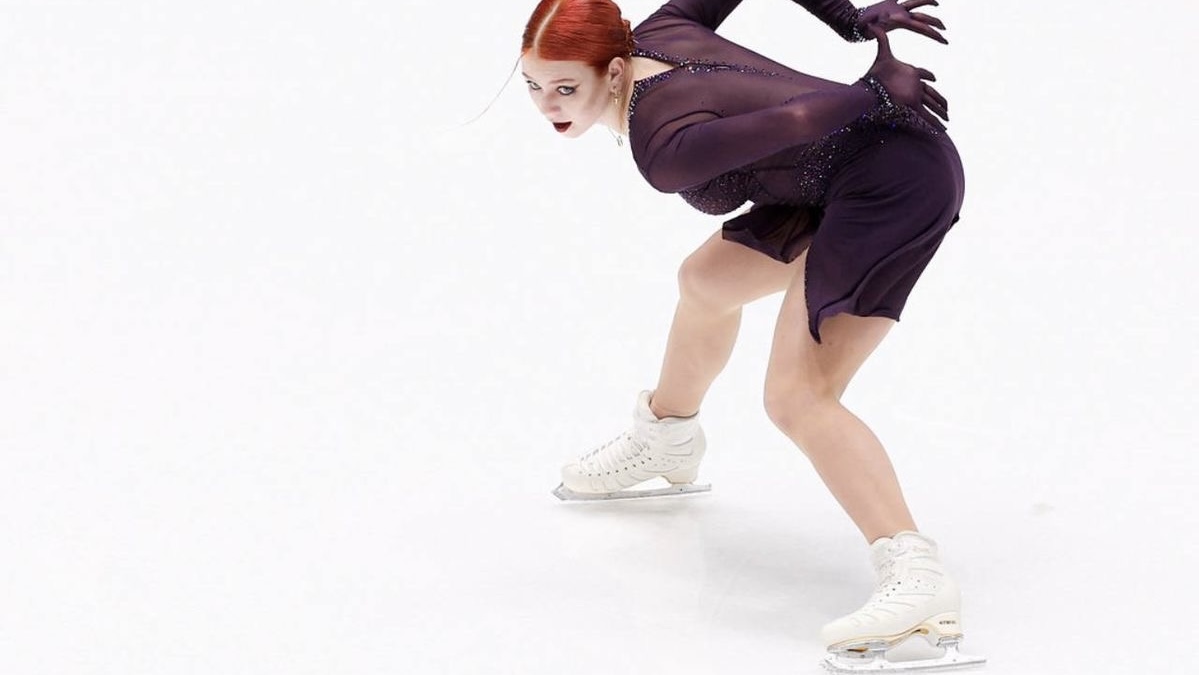January 15, 2025
Alexandra Trusova Expecting a Child
May 16, 2025

Figure skating demands a unique blend of strength, flexibility, artistry, and precision, all of which can be significantly enhanced through targeted off-ice training. Off-ice practice builds the physical and technical foundation needed to execute spins, jumps, and expressive movements on the ice with confidence and control. A 2019 Journal of Sports Sciences study found that off-ice training improves skating performance by 12% and reduces injury risk by 10%. This article outlines four key off-ice practices—ballet, conditioning, spins, and flexibility—and explains how each enhances on-ice performance, drawing on insights from elite skaters and scientific research to guide figure skaters of all levels.
Off-ice training complements on-ice practice by developing strength, coordination, and muscle memory in a controlled environment, allowing skaters to refine skills without the constraints of ice time. A 2020 Journal of Strength and Conditioning Research study notes that off-ice work enhances neuromuscular control by 15%, critical for complex skating elements. By focusing on ballet, conditioning, spins, and flexibility, skaters can build a robust foundation that translates directly to improved jumps, spins, and overall artistry, while also preventing overuse injuries.
Ballet training enhances the grace, posture, and musicality that define figure skating’s artistic component. It strengthens core muscles, improves alignment, and refines movement quality, all essential for spins, spirals, and choreography. A 2018 Journal of Dance Medicine & Science study found that ballet improves balance by 12% and artistry scores by 10% in skaters.
How It Helps On-Ice: Ballet’s emphasis on elongated lines and controlled movements directly improves skating posture, making spins like the layback more elegant and spirals more extended. It also sharpens musical timing, enhancing program expressiveness. For example, practicing ballet arm positions strengthens shoulder stability, aiding in maintaining a centered camel spin.
Practice Tips: Dedicate 1–2 hours weekly to ballet-inspired exercises, focusing on core engagement and fluid transitions. Work on standing tall with shoulders down to mimic skating posture, and practice slow, controlled leg extensions to build strength for spirals. Elite Skater Insight: Olympic champion Yuna Kim, in a 2014 interview, credited ballet for her seamless Gershwin free skate, noting that it “taught me to move with intention,” elevating her program component scores.
Conditioning exercises target the strength and stamina needed for explosive jumps and sustained spins. They focus on lower body power, core stability, and cardiovascular endurance, crucial for executing multi-revolution jumps and long programs. A 2020 Journal of Sports Sciences study reported that conditioning improves jump height by 8% and spin duration by 10%.
How It Helps On-Ice: Strong legs and core enable higher, more controlled jumps, like the triple loop, and maintain spin speed in sit spins. Enhanced endurance ensures skaters maintain energy through a four-minute free skate, avoiding fatigue-related errors. For instance, a strong core prevents wobbling during a combination spin, keeping rotations tight.
Practice Tips: Train 2–3 times weekly for 45–60 minutes, emphasizing lower body and core strength. Include rest days to prevent overtraining, and progressively increase intensity to build power. Elite Skater Insight: Nathan Chen, 2022 Olympic gold medalist, shared in a 2023 interview that off-ice conditioning was key to his quad jumps, stating, “Strength off the ice gave me confidence to push harder on it.”
Off-ice spin practice hones balance, centering, and body awareness, critical for mastering upright, camel, and sit spins. Using a stable surface, skaters can simulate spin positions and transitions, building muscle memory. A 2019 Journal of Strength and Conditioning Research study found that off-ice spin drills improve spin stability by 15% and reduce dizziness by 10%.
How It Helps On-Ice: Practicing spins off-ice refines alignment and core control, leading to tighter, faster spins on the ice. For example, rehearsing a sit spin position strengthens quads and stabilizes the pelvis, ensuring a low, centered spin. It also helps skaters adapt to the vestibular disorientation of spinning, minimizing dizziness during performances.
Practice Tips: Practice spins 2–3 times weekly for 15–20 minutes on a flat surface, focusing on maintaining a fixed axis and smooth transitions between positions. Start with single rotations and progress to multiple turns, ensuring proper posture. Elite Skater Insight: Evgenia Medvedeva, two-time world champion, noted in a 2020 interview that off-ice spin practice helped her perfect her combination spins, saying, “It built the control I needed for consistency.”
Flexibility training enhances the range of motion needed for spins, spirals, and jumps, allowing skaters to achieve aesthetically pleasing positions with less strain. A 2018 Journal of Dance Medicine & Science study found that flexibility training increases hip mobility by 15% and reduces muscle soreness by 12%.
How It Helps On-Ice: Greater flexibility enables deeper spiral positions and Biellmann spins, improving both technical and artistic scores. It also supports jump landings by allowing joints to absorb impact more effectively, reducing injury risk. For instance, flexible hip flexors facilitate a higher free leg in a triple salchow takeoff, enhancing rotation speed.
Practice Tips: Stretch 3–4 times weekly for 20–30 minutes, targeting hips, hamstrings, and back. Hold stretches for 30–60 seconds, focusing on gradual progression to avoid injury, and incorporate dynamic stretches before skating to warm up. Elite Skater Insight: Sasha Cohen, 2006 Olympic silver medalist, emphasized flexibility in a 2017 interview, stating, “My off-ice stretching made my spirals effortless,” which boosted her scores in Torino.
Off-ice training is a game-changer for figure skaters, building the strength, flexibility, and artistry needed to excel on the ice. Ballet refines posture and expression, conditioning powers jumps and endurance, spins enhance balance, and flexibility expands range, together creating a well-rounded skater. The experiences of Yuna Kim, Nathan Chen, Evgenia Medvedeva, and Sasha Cohen underscore how these practices translate to Olympic-level performances. Skaters, commit to 4–6 weekly off-ice sessions, start with foundational movements, and track progress with a coach’s guidance. By investing in off-ice practice, you’ll elevate your spins, soar higher in jumps, and glide with greater confidence, transforming your performance into a captivating display of skill and grace.
By Vitalina Andrushchenko, Staff Writer

January 15, 2025
Alexandra Trusova Expecting a Child

April 05, 2025
Alexandra Trusova and Makar Ignatov Reveal the Gender of Their Future Child

December 26, 2024
2025 World Junior Championship Schedule